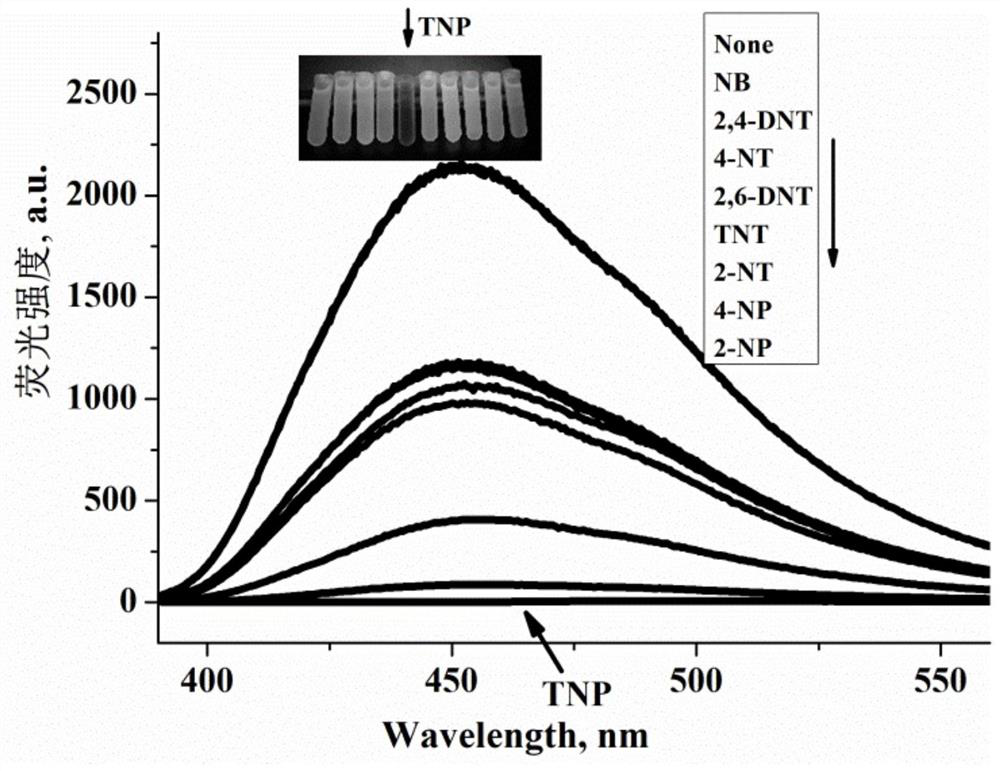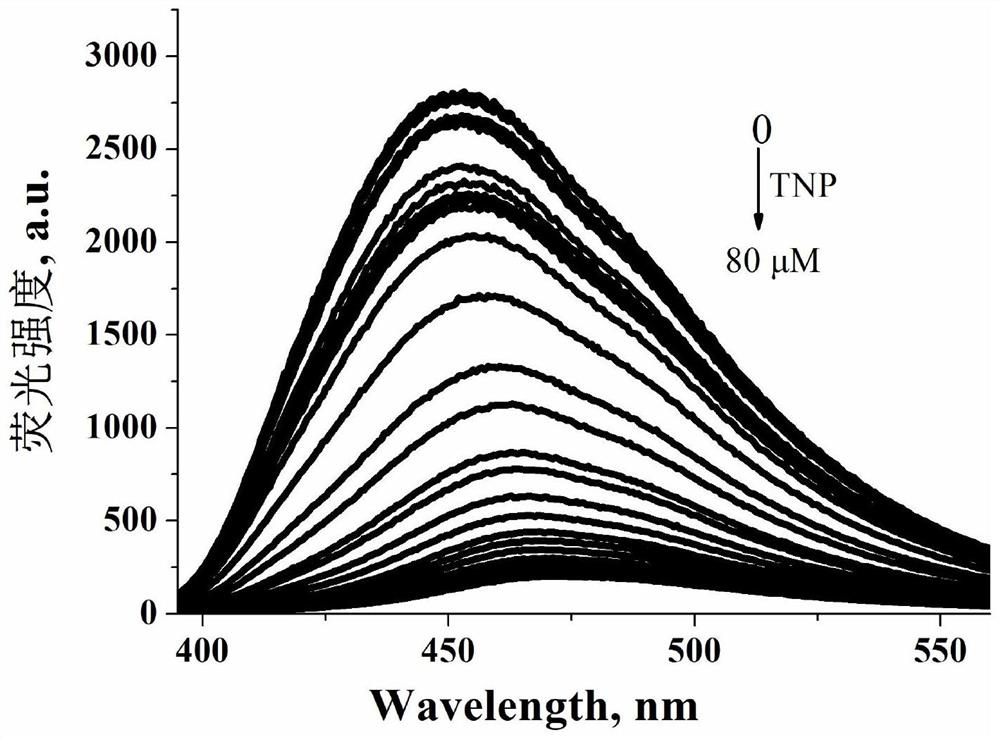Fluorescent probe for visual detection of silver ions and 2, 4, 6-trinitrophenol, preparation method and application
A technology of trinitrophenol and fluorescent probes, applied in chemical instruments and methods, fluorescence/phosphorescence, luminescent materials, etc., to achieve good selectivity, good application prospects, and high selectivity
- Summary
- Abstract
- Description
- Claims
- Application Information
AI Technical Summary
Problems solved by technology
Method used
Image
Examples
Embodiment 1
[0037] (1) Quina 1 19 g (13.2 mmol), 3,3'-diaminobliphenyidine 1.29 g (6 mmol) and 25 ml of polyphosphate (PPA) were added to 50 ml of three flasks and mixed mix, heated to 160 The reaction was stirred at ° C for 48 h, stop heating, and 25 ml of deionized water was added after cooling to room temperature. The mixture was adjusted with a sodium hydroxide solution to give PH = 9, filtered to give a brown solid. Anhydrous ethanol was recrystallized 3 times, dried to give probe L, yield: 83.6%.
Embodiment 2
[0039] (1) Quina 1 1.39 g (13.8 mmol), 3,3'-diaminobliphenyidine 1.29 g (6 mmol) and 36 ml of polypophosphate (PPA) were added to 100 ml of three flasks and mixed mixed, heated to 165 The reaction was stirred at ° C for 50 h, stop heating, cooled to room temperature, and 36 ml of deionized water was added. The mixture was adjusted with a sodium hydroxide solution to allow PH = 10, filtered to give a brown solid. Anhydrous ethanol was recrystallized 3 times, dried to give probe L, yield: 84.9%.
Embodiment 3
[0041] (1) Quina 1 18 g (12.6 mmol), 3,3'-diaminophenylideine 1.29 g (6 mmol) and 24 ml of polyphosphate (PPA) were added to 50 ml of three flasks and mixed mixed, heated to 155 The reaction was stirred at ° C for 48 h, stop heating, and 24 ml of deionized water was added after cooling to room temperature. The mixture was adjusted with a sodium hydroxide solution to give PH = 9, filtered to give a brown solid. Anhydrous ethanol was recrystallized 3 times, dried to obtain probe L, yield: 81.2%.
[0042] Nuclear magnetic resonance analysis was carried out by a nuclear magnetic resonance unit, and the results were as follows:
[0043] 1H NMR (400MHz, DMSO, unit: PPM, such as figure 1 The shown: 7.61-7.79 (m, 6H), 7.95-7.85 (m, 4H), 8.07-8.12 (D, J = 8.1 Hz, 2H), 8.17-8.25 (D, J = 8.3Hz, 2H), 8.50-8.63 (m, 4H), δ13.30 (S, 2H).
PUM
 Login to View More
Login to View More Abstract
Description
Claims
Application Information
 Login to View More
Login to View More - R&D
- Intellectual Property
- Life Sciences
- Materials
- Tech Scout
- Unparalleled Data Quality
- Higher Quality Content
- 60% Fewer Hallucinations
Browse by: Latest US Patents, China's latest patents, Technical Efficacy Thesaurus, Application Domain, Technology Topic, Popular Technical Reports.
© 2025 PatSnap. All rights reserved.Legal|Privacy policy|Modern Slavery Act Transparency Statement|Sitemap|About US| Contact US: help@patsnap.com



